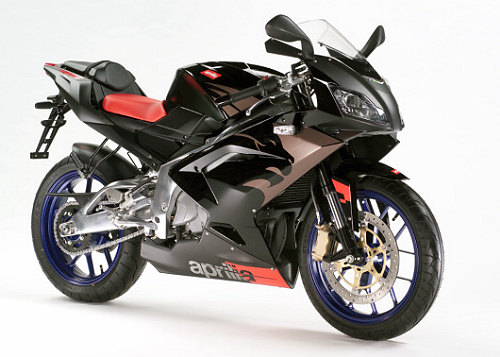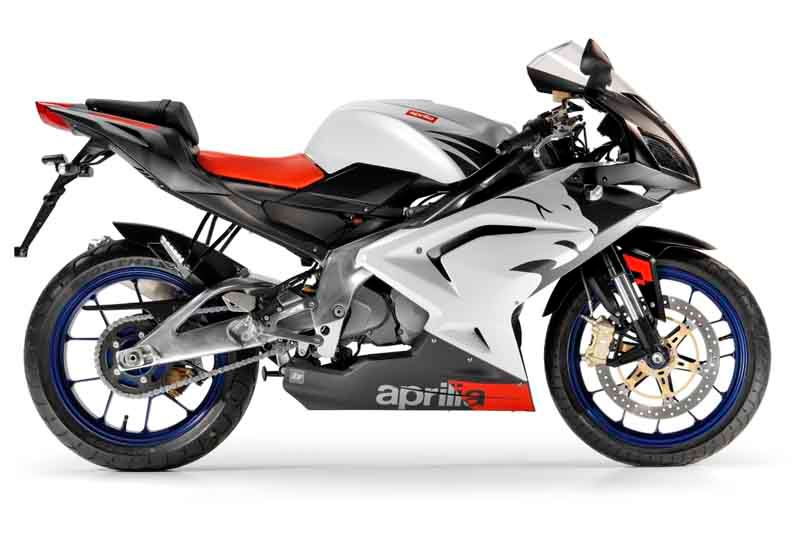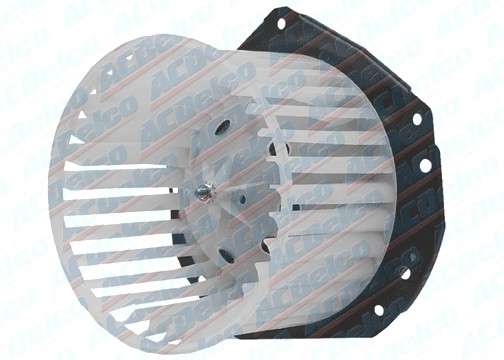
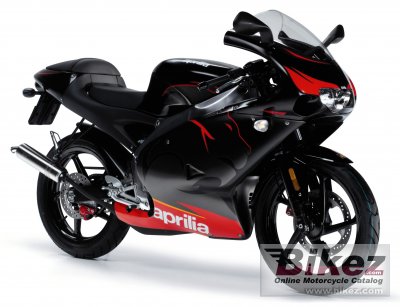

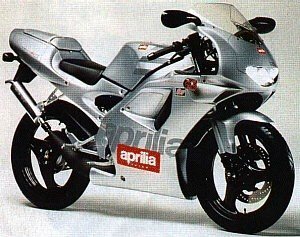
aprilia RS 50
The following are just the most important: • aluminium frame • aluminium swingarm • lightweight wheels with ‘Y’ spokes • radial caliper front brake • Euro 2, two-stroke engine • fairing based on that of the RSV 1000 R • analog/digital instruments STYLE The aggressive lines of the new RS 50 are enhanced by a new, wind tunnel tested fairing, with a sporty modern The specifications for the RS 50 are simply breath-taking. No wonder the RS 50 is the machine that all other 50 cc bikes have to beat. This same thirst for victory is found in the RS 50, together with technology developed for the world-beating Aprilia 125 GP. In terms of style, the RS 50 is clearly and unashamedly inspired by the flagship of the Aprilia family, the RSV 1000 R, the twin that beat Japanese four cylinder racers to win the 2006 Master Bike trophy.
This 50 cc supersport is made to thrill and has all the performance needed to do so. Its eye-catching, racing lines and determined, aggressive shape tell you that the Aprilia RS 50 knows no compromises. The Aprilia RS 50 is a genuine sports motorcycle, and comes packed with the sort of technology normally found only on a GP racer. Because these are the specifications of the Aprilia RS 50, the undisputed top dog in the world of 50 cc supersport motorcycles. But you would be wrong.
You might think that you can only find lightweight wheels, radial calipers, an aluminium frame and swingarm, and an under-seat exhaust on a big bike.
This 50 cc supersport is made to thrill and has all the performance needed to do so. Its eye-catching, racing lines and determined, aggressive shape tell you that the Aprilia RS 50 knows no compromises. The Aprilia RS 50 is a genuine sports motorcycle, and comes packed with the sort of technology normally found only on a GP racer. Because these are the specifications of the Aprilia RS 50, the undisputed top dog in the world of 50 cc supersport motorcycles. But you would be wrong.
You might think that you can only find lightweight wheels, radial calipers, an aluminium frame and swingarm, and an under-seat exhaust on a big bike.
